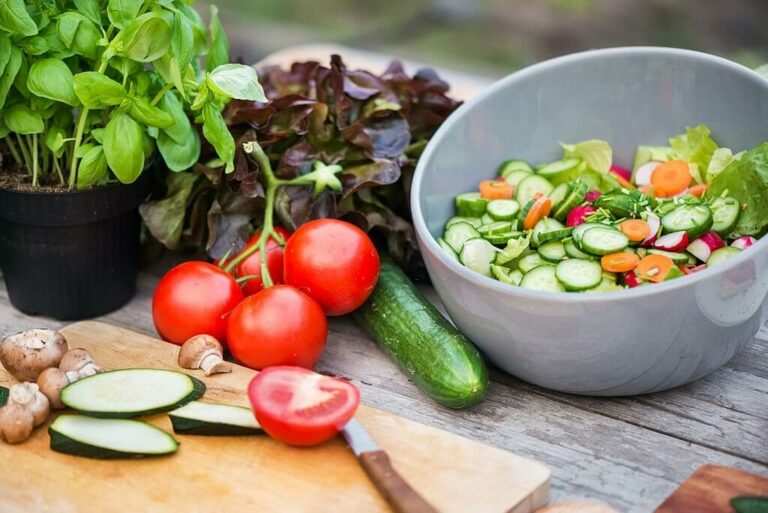Are Condiments Healthy? The Truth About ‘Non-Brewed Condiments’ and More

Condiments are those flavorful sauces, dressings, and seasonings that can make a simple meal extraordinary. From ketchup and mustard to salad dressings, hot sauces, relishes, and more – condiments add bursts of flavor, texture, and excitement to our cuisine. But are these flavor enhancers actually good for us? The answer, like many things in nutrition, is that it depends.
Some condiments provide beneficial nutrients and compounds that can be part of a healthy diet. Others, however, are loaded with sugar, salt, preservatives, and other unhealthy additives that could potentially negate the benefits of the foods they’re added to. When it comes to assessing the health impacts of condiments, it’s important to look at the specific ingredients and nutrients they contain.
Let’s break it down by looking at some of the most common condiments and whether they lean more toward the healthy or unhealthy side of things.
Ketchup
The classic American condiment is a pantry staple for burgers, fries, and much more. Unfortunately, most commercial ketchup brands are quite unhealthy. They tend to be very high in added sugars and low in nutrients. A single tablespoon of ketchup can contain around 4 grams of sugar, which comes predominantly from high fructose corn syrup.
The high sugar content combined with a lack of protein, fiber or healthy fats makes ketchup a major contributor to insulin spikes, weight gain, and other health issues when consumed in excess. Some ketchup brands are also relatively high in sodium.
That said, ketchup does provide some nutritional benefits in the form of the antioxidant lycopene from its cooked tomato base. And sugar-free or low-sugar ketchup varieties can make it a more diet-friendly option. But overall, ketchup is one of the less healthy condiments.
Mustard
Yellow mustard is a solid, healthy condiment choice with almost no calories, fat, or sugar. It contains turmeric which provides anti-inflammatory benefits, as well as a bit of protein and fiber. Most mustard varieties are also low in sodium compared to other condiments.
Whole grain and Dijon mustards are even better options, delivering more nutrients like fiber, iron, calcium, and antioxidants like selenium from the mustard seeds. Mustard makes a great, low-calorie addition to sandwiches, proteins, roasted veggies and more.
Hot Sauce
Many hot sauces can be quite nutritious! High quality, natural hot sauces provide vitamins A and C, as well as beneficial compounds from the chili peppers like capsaicin. Capsaicin has anti-inflammatory effects and may help boost metabolism slightly.
However, some hot sauce brands can be very high in sodium, so it’s important to enjoy them in moderation and opt for lower-sodium varieties when possible. Hot sauce is a great way to add flavor and a kick of spice to dishes without adding much in the way of calories, sugar, or fat.
Salad Dressings
Salad dressings run the gamut from extremely unhealthy to very nutritious depending on the type and brand. Many commercial dressings like ranch are loaded with saturated fat, sodium, and sugars while providing very little in the way of beneficial nutrients.
Your best bets are simple oil and vinegar dressings, or those made from quality olive oil and vinegars/citrus juices. These provide some healthy unsaturated fats along with antioxidants. You can also make your own nutritious dressings using Greek yogurt, avocados, nut butters, and plenty of herbs and spices. Store-bought dressings can hide loads of added sugars and unhealthy oils, so read labels carefully.
Mayonnaise
Full-fat mayonnaise gets a bad nutritional rap, but when made with quality ingredients like olive oil or avocado oil, it can actually be a healthy source of good fats. The fats in real mayonnaise are predominantly monounsaturated and polyunsaturated which can improve cholesterol levels and heart health.
That said, mayo is also quite high in calories for a condiment, so portions need to be controlled. Avoid mayonnaise made with soybean, canola or other refined vegetable oils. And watch out for sugar-filled, low-fat mayo varieties which substitute unhealthy additives for the fats.
Soy Sauce
For adding an umami, savory depth of flavor to dishes, soy sauce is a tasty option. Traditionally brewed soy sauce does contain some beneficial antioxidants and amino acids. However, it is extremely high in sodium with over 1000mg of salt per tablespoon.
For those looking to reduce sodium intake, low-sodium tamari or coconut aminos make flavorful ‘non brewed condiment’ alternatives to regular soy sauce. When used sparingly as just a flavor enhancer, traditional soy sauce can be enjoyed in moderation as part of an overall healthy diet.
Relishes
Pickled relishes can be a nice way to add a pop of flavor and texture to dishes. Quality pickle relishes made from vinegar, cucumbers or other fruits/veggies, and herbs/spices can provide some beneficial plant compounds and antioxidants in each tangy bite.
However, many commercial pickle relishes also contain excessive amounts of sodium and sugar, so enjoy them sparingly. Look for low-sodium or no sugar added varieties whenever possible.
Pesto
A versatile sauce made from olive oil, pine nuts, basil and garlic, pesto is one of the healthier condiment choices. The healthy unsaturated fats, antioxidants, and other plant compounds in pesto can provide anti-inflammatory effects.
Just be mindful of portions since pesto is quite calorie-dense. You can also make lighter versions using fewer nuts or swapping in different healthy ingredients like avocado or Greek yogurt as the base.
In general, the healthiest condiments will be those made from simple, high-quality ingredients without a lot of unnecessary additives, excess sodium, or added sugars. As with anything in nutrition, moderation is key when it comes to condiment portions as they can easily cause calorie and sodium overloads if over-consumed.
The best approach is to use condiments judiciously to add flavors and fun to healthier foods and meals built on a base of lean proteins, vegetables, fruits, whole grains, nuts/seeds, and other nourishing ingredients. When used appropriately as flavor enhancers rather than primary components of dishes, quality condiments can absolutely be incorporated into an overall nutritious diet.
Many cultures around the world feature robust, flavorful condiments as a way to excite the palate without relying on excessive amounts of salt, sugar or unhealthy fats. Think along the lines of chutneys, dressings made with citrus and herbs, spice blends and rubs, olive/nut/seed based sauces and dips, and fermented brews like tamaris or coconut aminos.
These ‘non brewed condiments’ and others made with wholesome, minimally processed ingredients should be your go-tos when looking to add excitement to healthy foods. Even ketchup, ranch, BBQ sauce or other classic American condiment favorites can fit into a balanced diet if you read labels and opt for low-sodium, low-sugar varieties made without a lot of artificial additives.
So don’t be afraid of condiments. Just be selective about which ones you choose and enjoy them as flavorful accent pieces – not the foundation – of your nutritious meals. Used strategically, these flavor boosters can make healthy eating a deliciously addictive habit.





